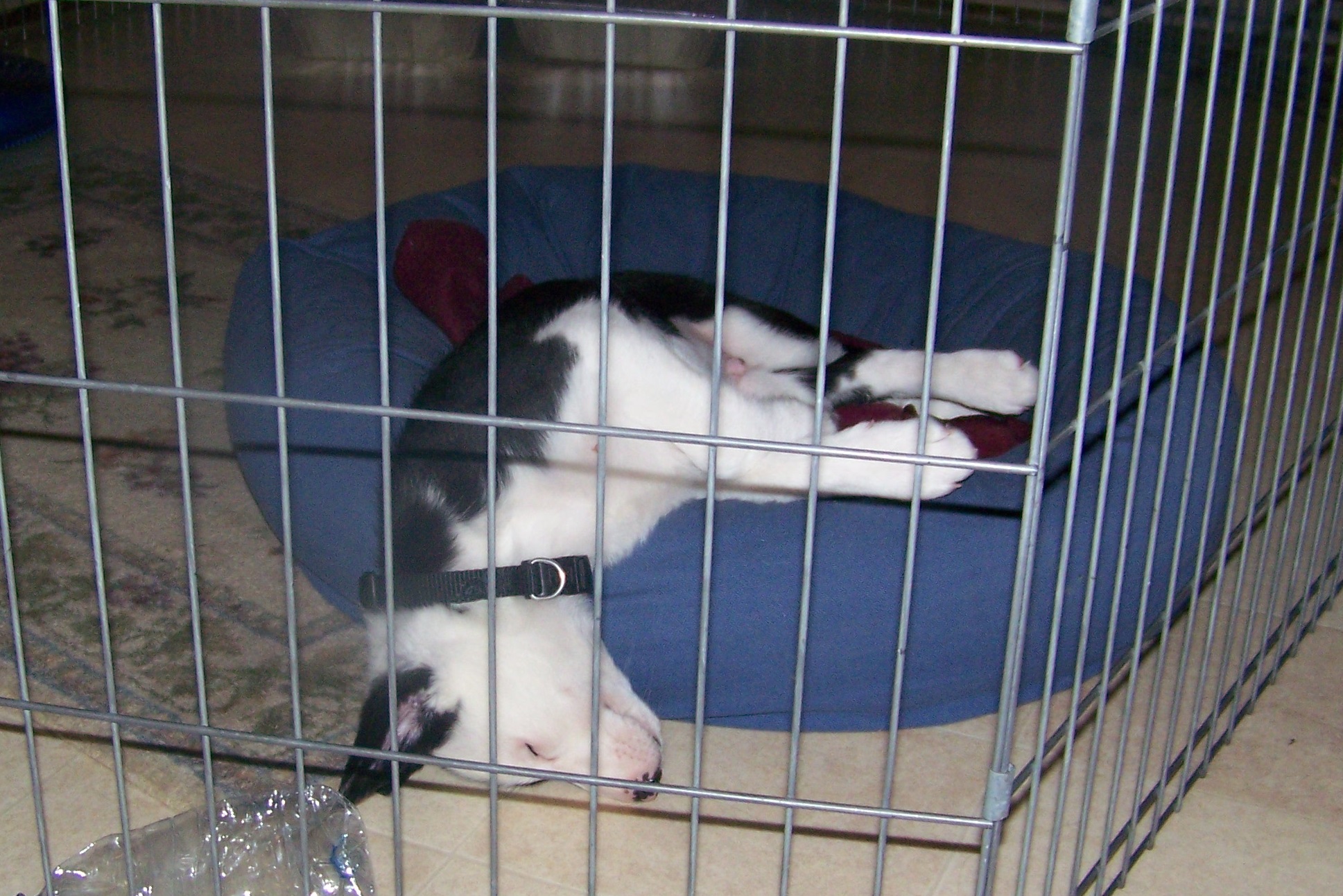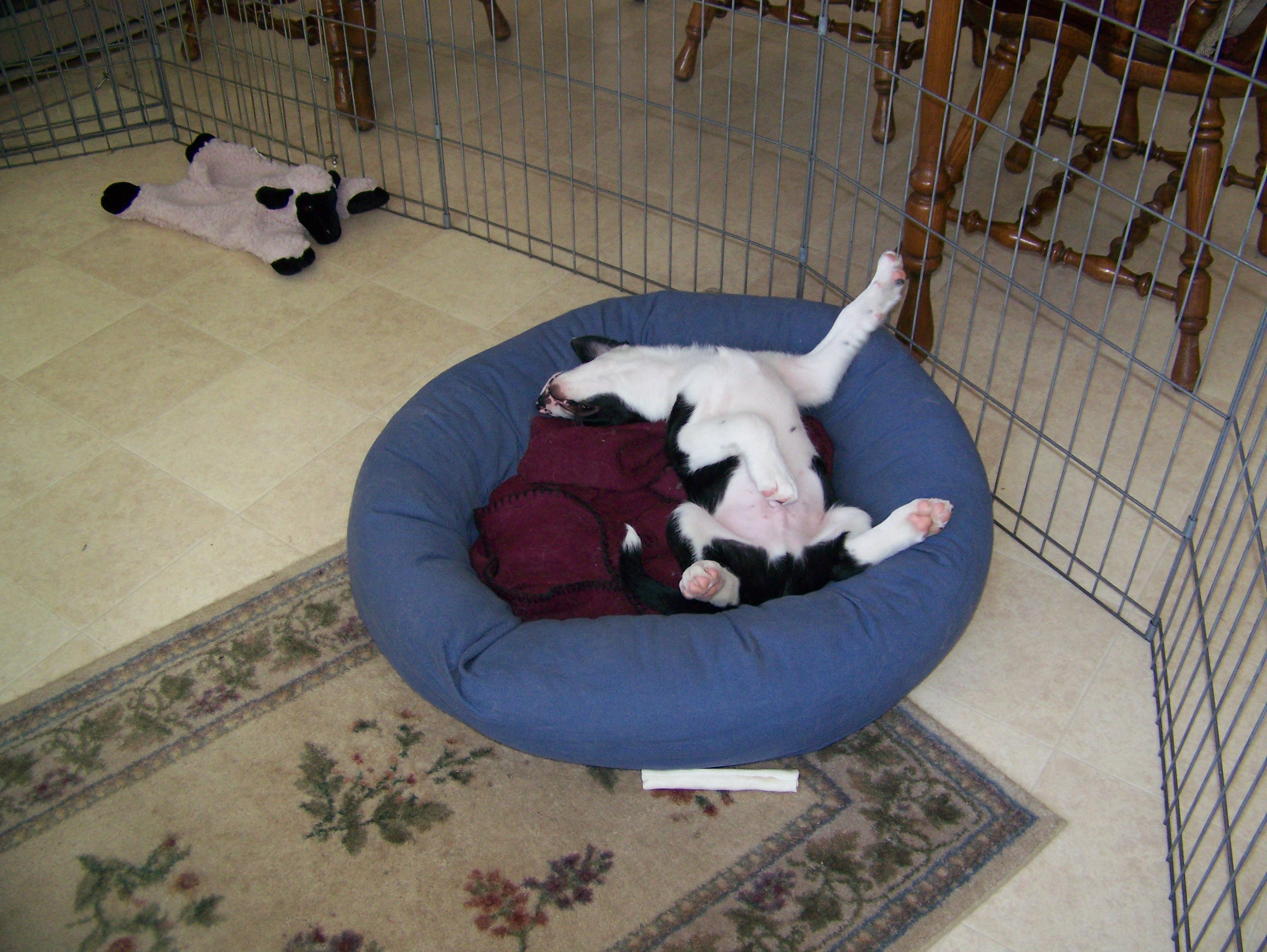One thing I love about raising puppy Tai is how it’s getting me back to the basics but at the same time creating the opportunity to develop, shape and nurture a new life to its full potential, without the expenses of a college education :-). On the basics of dog training, one example is thinking clearly about criteria and reinforcement including the mechanics of holding a handful of treats, a clicker, clicking at just the right time and delivering one single treat, quickly with perfect placement.
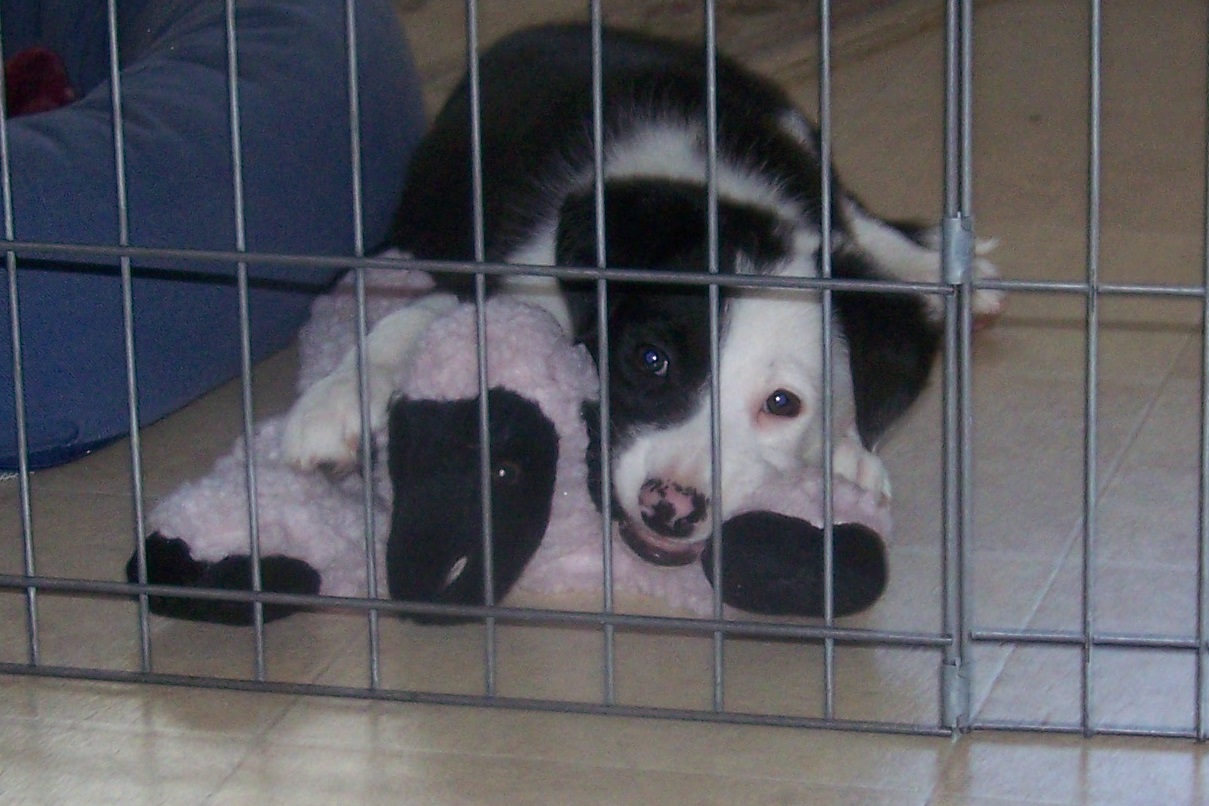 In many ways, Tai is just like my previous sheltie puppies. In other ways, he’s different. He’s definitely more inventive and I can see that he is perfectly capable of creating games to entertain himself – enter Susan Garrett’s relationship building program! We’ve been shaping a sit with Sit-Tug-Sit and his sits are getting quicker. I want them to be lightning fast before adding the “Sit” cue. We did some restrained recalls last night (I wish we had a bigger house or it wasn’t winter!) and I’ve been using opportunities to call him to me from other parts of the house.
In many ways, Tai is just like my previous sheltie puppies. In other ways, he’s different. He’s definitely more inventive and I can see that he is perfectly capable of creating games to entertain himself – enter Susan Garrett’s relationship building program! We’ve been shaping a sit with Sit-Tug-Sit and his sits are getting quicker. I want them to be lightning fast before adding the “Sit” cue. We did some restrained recalls last night (I wish we had a bigger house or it wasn’t winter!) and I’ve been using opportunities to call him to me from other parts of the house.
Last night he was at one end of the house and I called him to me (“Tai”!!) from the kitchen. He flew from the family room through the dining room to the kitchen, past me (I wasn’t in his direct line of sight) to the front of the house where Lacey and Breeze were behind a gate I had only propped up. He barrelled through the gate, knocked it down, realized I wasn’t there, turned back around and ran on top of the gate to find me. Like I said…a bold puppy. Meanwhile the older dogs, backed up to stay out of the ruckus and just watched.
Tai is definitely less interested in food than my shelties, but is learning that really tasty treats have value. So I’ve started “loading the clicker” and conditioned him to his first collar. Today we’ll add the leash. And I’m continuing to build value for his crate with good chewies.
There are many good books on how to raise a puppy. My favorites include Susan Garrett’s Ruff Love for its practical approach, Jean Donaldson’s Culture Clash for its explanations of the true nature of dogs and our relationship with them and Susan Garrett’s Shaping Success for its puppy rearing program embedded in a great narrative. None of these books provide a recipe but have helped me understand more about dogs and animal learning and heavily influence my approach to puppy rearing.
Before Tai arrived home, I wrote this approach in my journal that I’ll share here:
- First, take care of my puppy’s physical needs. He’s a small creature – just 7 weeks old when he arrived home. He needs protection, warmth, nutrition, exercise, elimination opportunity :-), proper vaccinations and medication, etc.
- Second, take care of my puppy’s social needs. His first days here were the first without any of his littermates. He needs attention, physical contact, and positive social interaction with humans and the older dogs. He needs time to adjust…everything will be new and I do mean everything. No need for big field trips – a trip to the backyard will be plenty. From that start, socialize, socialize, socialize.
- Third, observe the puppy. What is he like as he explores his world? What is he attracted to? What does he find scary? How much time does he need to adjust to new things? What food/toys does he like?
- Fourth, remember the puppy is learning 27 x 7. Modify behavior using operant and classical conditioning. See books above!
- Fifth, be aware of when he may be training me.
After 3 days at home and 7-1/2 weeks old, it’s going great. Today, we’ll take our first short car ride and make some new human friends. So far, so good!
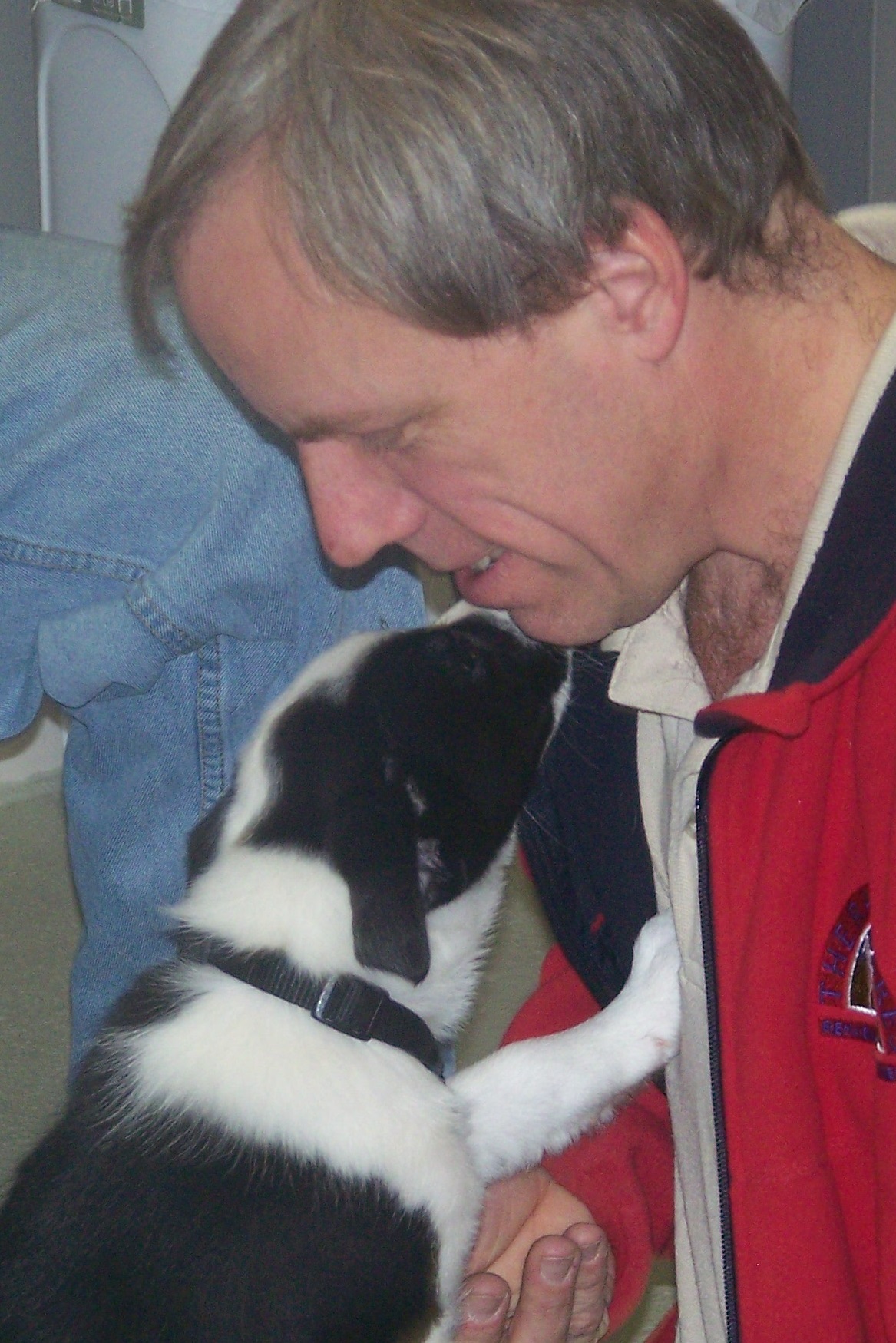 Tai – just 8 weeks old today- is a party guy. He loves everyone he meets, is generous with his puppy kisses and his antics quickly bring smiles and laughs. We hit the road over the last few days – to take advantage of this critical socialization period.
Tai – just 8 weeks old today- is a party guy. He loves everyone he meets, is generous with his puppy kisses and his antics quickly bring smiles and laughs. We hit the road over the last few days – to take advantage of this critical socialization period. 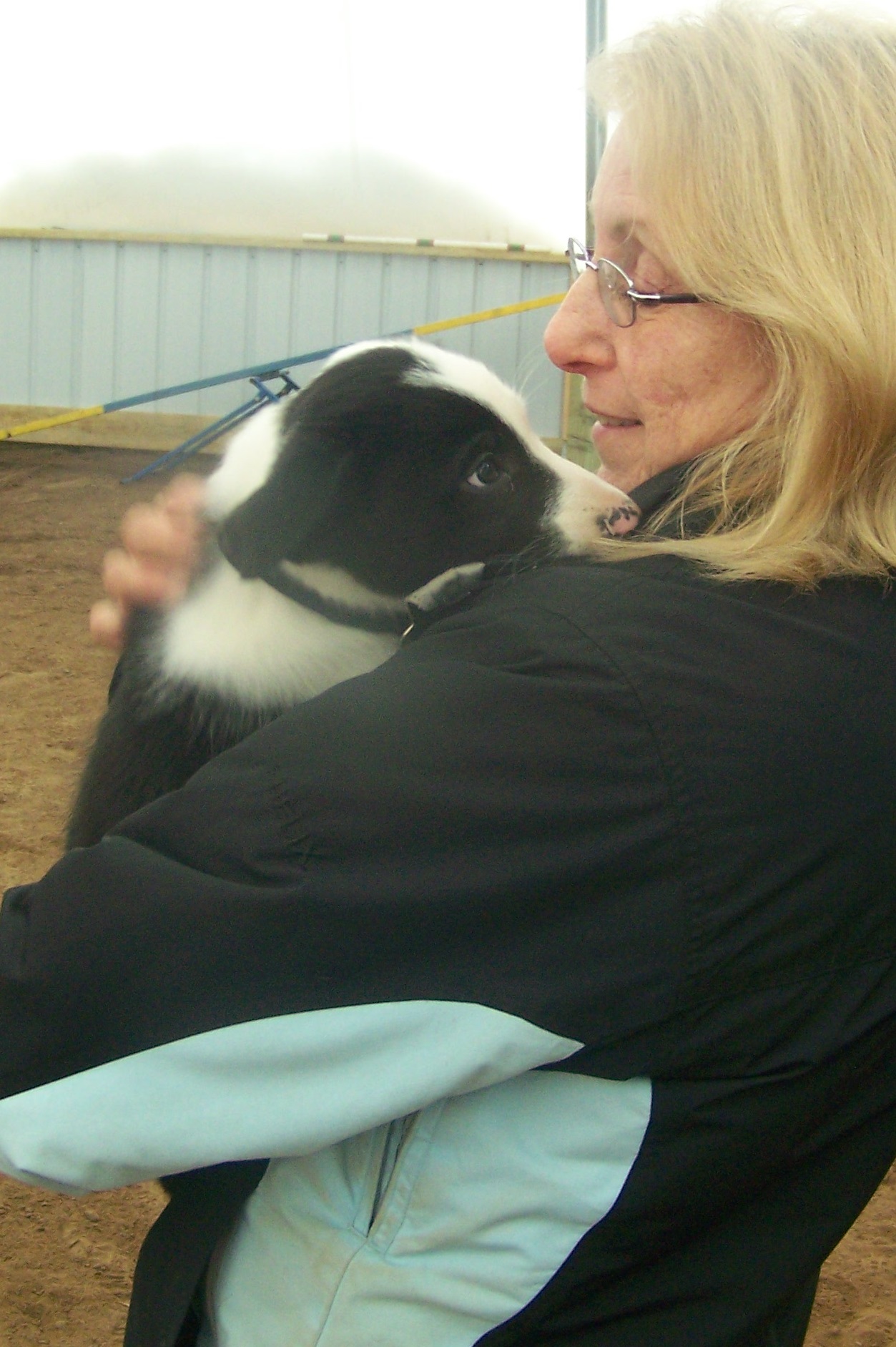 Tai met new people, visited new places, was around new adult dogs (but didn’t interact with them) walked on new surfaces, experienced dirt in his face, learned he can bury his head in fresh snow, listened to noisy crows, was alone in his crate in a new place, met a worker that came to the house and watched him drill and hammer with interest. We even found a patch of grass in our yard. What did he do? Tried to eat it of course! He handled all these new experiences relaxed and curious.
Tai met new people, visited new places, was around new adult dogs (but didn’t interact with them) walked on new surfaces, experienced dirt in his face, learned he can bury his head in fresh snow, listened to noisy crows, was alone in his crate in a new place, met a worker that came to the house and watched him drill and hammer with interest. We even found a patch of grass in our yard. What did he do? Tried to eat it of course! He handled all these new experiences relaxed and curious.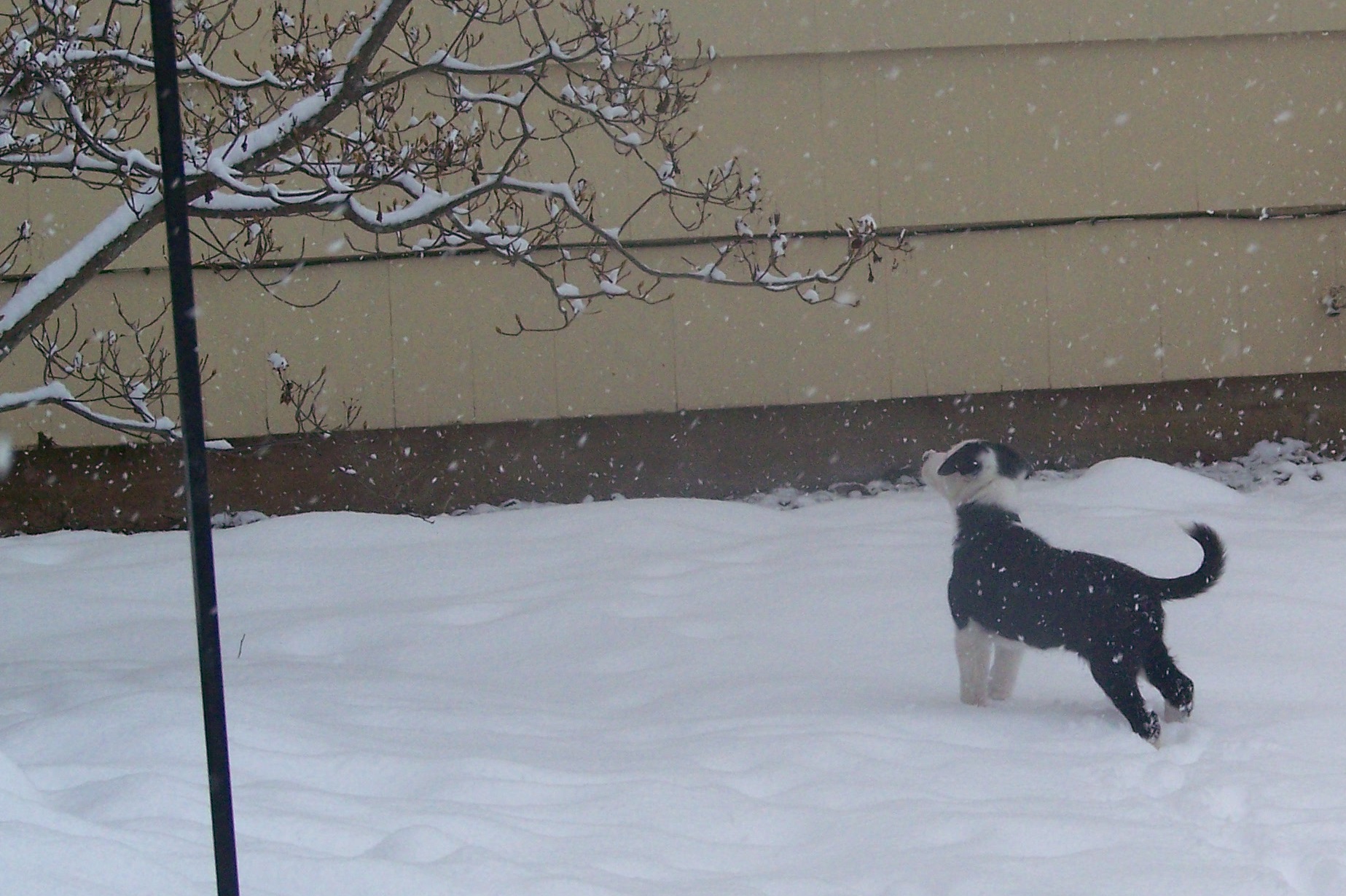
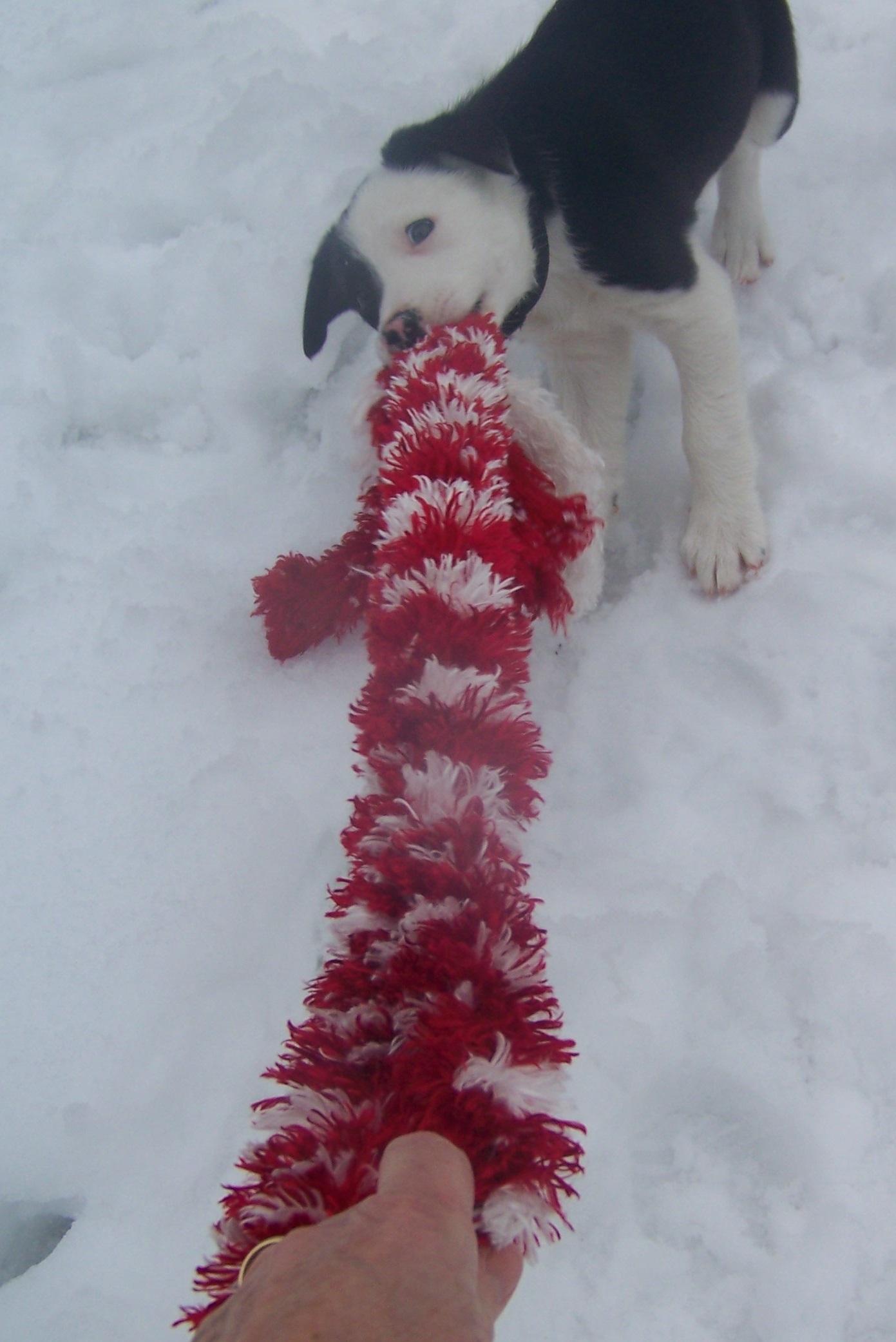 We’ve played the game in different rooms in the house, outside and in a friends training barn. The clicker is loaded and he is hand targeting. The light bulb has gone on that his behavior can elicit a reward. We’ve done lots of recalls to the mama and he’s fallen in love with Dad’s rough housing games. Oh…I’ve learned something too. Razor sharp little teeth mean it’s wise to keep LOTS of chew toys handy.
We’ve played the game in different rooms in the house, outside and in a friends training barn. The clicker is loaded and he is hand targeting. The light bulb has gone on that his behavior can elicit a reward. We’ve done lots of recalls to the mama and he’s fallen in love with Dad’s rough housing games. Oh…I’ve learned something too. Razor sharp little teeth mean it’s wise to keep LOTS of chew toys handy.